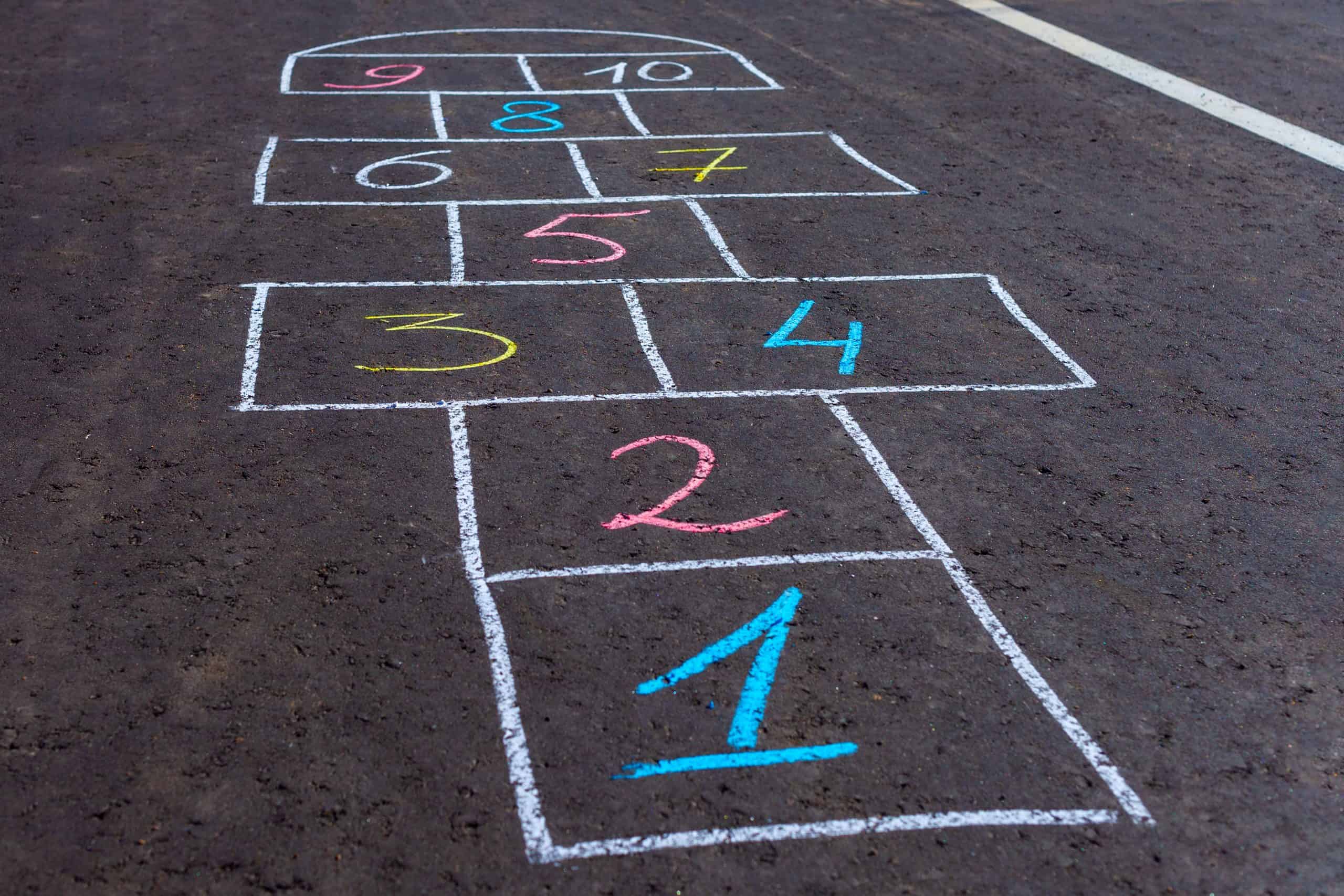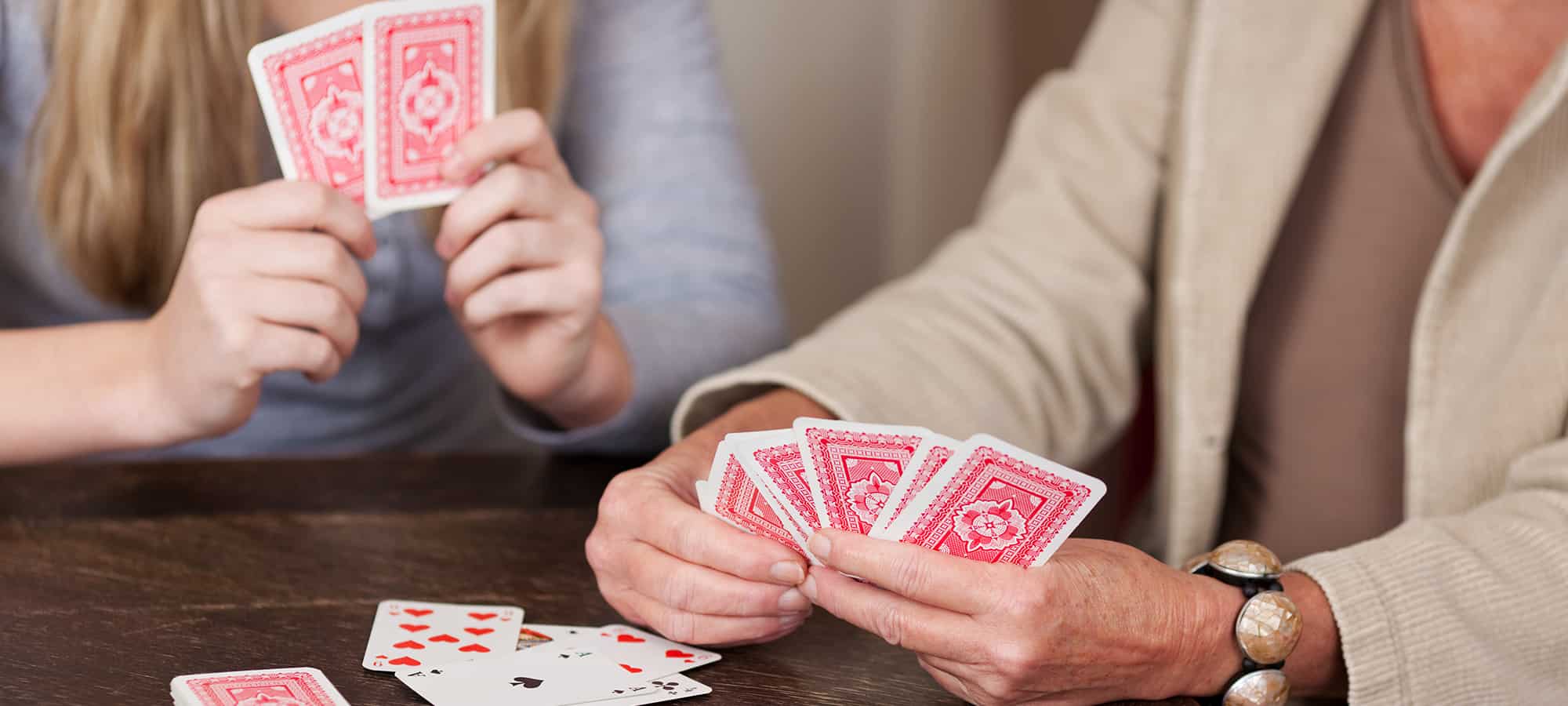If you’re looking for things to do with the kids these school holidays or just looking for fun ways to do something active our outdoors with them – you only need to look to your childhood and remember the (now) old school games you played.
Remember your days in the playground at school and all the fun games you used to play like Elastics, Hopscotch, Hand Ball and Marbles? Or the endless variations of Tiggy (Tag) you played? How many different ways did we find to ‘tag’ another player? I mean aside from traditional Tiggy, there was Stuck in the Mud, Red Light/ Green Light, Shadow Tag and Marco Polo just to name a few!
In this technological-driven world, with endless online stimuli – sometimes simplifying the options for entertainment and getting ‘old-school’ with the kids is just what they need to connect with you, get active and have a good time!
Plus, this style of games will only keep being remembered and played- if we actually play them! We don’t want Hide and Seek going the way of the Earth… so, please PLAY and PLAY again for old-school games’ future sake! You may have already forgotten how to play, being a little out of practice, but it doesn’t take more than a google search to get freshened up again, and I guarantee once you start playing, all those fond childhood memories will flood back.
There are so many games to choose from … but to help you get started I’ve shared our favourite 20 below, with simple instructions on how to play them. We hope you and your children have fun playing these classics.
Pass on the fun you experienced as a child with these old school games.
Hide and Seek
A simple, yet fun game, that kids love to play. One person (the seeker) counts to an allotted number- this can be 10, 20, 30 or even 100, depending on the age of the children playing and the difficulty level of the hiding spots being selected. All other players hide during this time. Be clear at the start where boundaries are for hiding and the rules for the game, i.e ‘you can only hide in the house,’ ‘no going outside the house yard,’ or ‘no climbing.’ Once the ‘seeker’ has finished counting, they try to find the players that are hiding. The first one to be found is the next seeker, while the last found is the winner of the round.
Freeze Tag/ Stuck in the Mud
Freeze Tag – A variant of traditional tag/ tiggy, where the person who is tagged must ‘freeze’ immediately and can only be ‘unfrozen’ and join back in the game, when another player (apart from the person who is ‘it’) tags them. The aim is for the person who is ‘it’, is to tag and freeze everyone.
Stuck in the Mud – is played exactly the same way as ‘Freeze Tag’, but instead of just ‘Freezing’ when tagged, players stand with their legs wide to give enough room for another player to crawl through them. Please note that the person who is ‘it’, cannot tag the players when a person is crawling through. In this action – they are safe. The players can be caught however, going into/ coming out of the crawl.
Marco Polo
Played in a swimming pool, Marco Polo is a great way to stay cool and have fun.
The player who is ‘it’, closes their eyes and calls out “Marco!”. The other players then have to call out “Polo!” Listening Carefully, the person who is ‘it’, tries to follow the sound of the players voices to find them in the pool and tag them. Once tagged, the player caught, is then ‘it.’ If the person who is ‘it’ thinks a player is out of the pool when they call out “Polo!”, they can say “fish out of water”, and that person is automatically ‘it’ for the next round.
Shadow Tag
Another tagging game, but this time, instead of tagging another player’s body, you tag their shadow instead. You do this by tapping on their shadow with your foot.
Hopscotch
Draw the hopscotch board on the ground with chalk. A traditional hopscotch game consists of nine squares and a semi-circle at the top, numbered 1-10. Draw the squares big enough to fit your foot in them.


Using a flat stone or a small beanbag (or similar), start by trying to toss it onto the square labelled ‘1’. The stone must stay in the square without touching the lines or bouncing out. If this happens, you lose a turn and pass the stone to the next player.
If it does land within the square – you then hop on one foot through the squares (with the exception of 4/5 and 7/8 – where both feet come down- so you have one foot in each square at once). You need to skip past/ over the square your stone is on in each round.
Please note: just like you lose a turn if the stone touches a line of bounces out of the square, you lose a turn if you hop on a line, the wrong square or out of the square and must wait for your next turn to try again.
If you made it all the way to ‘10’, this is your turn around point. You turn around and hop all the way back, collecting your stone on the way back. You do this by stopping on the stone just before it and bending down (balancing) picking the stone up and then (once again) hopping over that square to finish up.
This process is repeated until you are tossing the stone to make number ‘10’ and you do so successfully. The first player to get to 10 wins. You can read more and learn about variations to the game here on WikiHow.
Duck, Duck, Goose
Best played in groups of 6 players or more. Children sit in a circle (facing toward the centre). One child is selected to be ‘it’. ‘It’ is the player who walks around the circle, tapping the other players gently on the top of their heads or shoulders. As they tap the other players, they say ‘Duck’ each time until they choose a player to be the ‘Goose’- tapping them on the shoulder or head, like the ‘Ducks’, only this time the ‘Goose’ doesn’t stay sitting, they must get up and chase after the person who is ‘it’ around the outside of the circle, trying to tag them before they make it all the way around and into the spot where the ‘Goose’ had been sitting.
If the person who is ‘It’ makes it back to the ‘Goose’s’ spot without being caught, the Goose becomes the new ‘It’, and the cycle of the ‘Duck, Duck, Goose’ circle continues.
If the ‘Goose’ does catch the person who is ‘It’, ‘It’ sits in the centre of the circle and remains there until another person who is ‘It’ gets caught by the Goose, replacing them.
Please note: there is no limit to how many times a player can say ‘Duck’, until they choose a ‘Goose.’
Please, Mr Crocodile, may we cross the river?
At the start of the game all players line up on one side of the play area (which will be your imaginary river/ river banks). This could be a large room, a back yard or a green space you’ve outlined with cones/ markers a minimum of 6 m long, increase the width size of the playing area as the number of participants increases (you don’t want to be too cramped – as players will turn and run back in a hurry and may not be watching where they are going too well. We want to avoid people crashing onto each other.)
One player is chosen to be ‘Mr Crocodile’.
Mr Crocodile stands in the middle of the playing space.
The other players then call out ‘Please, Mr Crocodile, may we cross the river? If not, why not, what’s your favourite Colour?’
Mr Crocodile then chooses a colour, and anyone wearing that colour is ‘safe’ to cross the ‘river’.
One all the safe players have made it to the other side. The remaining players (not wearing the colour chosen) then have to try and cross without being ‘caught’ by Mr Crocodile.
If a player is caught, they become Mr Crocodile for the next round. If no player is caught, the current Mr Crocodile stays in the middle for the next round or until he catches someone.
What’s the Time, Mr Wolf?
Select a playing space (similar in size as Please, Mr Crocodile).
One child is selected or volunteers to be ‘Mr Wolf’. This Player stands on the opposite side of the playing space with their back to the other players.
All other players stand in a line and call out ‘What’s the time Mr Wolf?’
Mr Wolf, then calls out a time between 1 and 12 O’clock.
The players then take the number of steps towards Mr Wolf to correspond with the time: e.g. 6 o’clock, means the players take six steps.
This process is repeated until Mr Wolf decides it’s ‘Dinner Time.’
When Mr Wolf calls ‘Dinner time’ out in response to the Question ‘What’s the Time Mr Wolf’ he turns around and will chase after the players. The players will also turn and run back to the safety of the start line, if Mr Wolf catches someone, before they get there, they become the new ‘Mr Wolf,’ and the game continues.
Red Light, Green Light
Another chasing game, played in a similar size space to ‘What’s the Time Mr Wolf?’
Like Mr Wolf, one player stands on the opposite time of the playing space, with their back to the other players.
This player will then call out ‘Green Light’, and the other players will move toward the person who is ‘Up’, until that person spins around calling ‘Red Light’. When players hear the ‘Red Light’ command, they must freeze where they are. Any person caught moving by the person who is ‘up’ has to go back to the start line.
Play continues until a child reaches the player who is ‘Up’ and tags them on the back. When this happens – that player is now ‘Up’ and the game begins again.
Monte Carlo
For this game you will need a deck of cards and four sheets of A4 (or larger) paper/cardboard that have one of each of the card suit symbols drawn on them (hearts, clubs, diamonds, spades). Please make the drawings large enough to be seen from the other side of the room. Place one poster in each corner of the room. There should be a different card suit in each corner.
Start some music and get the players to move around the space (this can be at random, dancing or in a clockwise/ anti-clockwise direction). When the music stops, players must move into a corner of the room, choosing a card suit. The person monitoring the game/ holding the deck of cards, then gets a player to select a card at random from the deck (make sure the cards are facing down). All players who were standing in the corner with the symbol corresponding to the card selected are now out of the game. Play until one person is the winner.
Elastics
Elastics is a fun jumping game for 3 or more players.
There’s lots of different chants and corresponding actions to match for you to try. You can find loads of instructions online, including videos like this one from Launchpad, to help.
Skipping (with a skipping rope)
Skipping is a super sneaky and FUN way to stay fit. You may remember some of the rhymes and games you used to play as a child, but if you need a refresher: here’s a few resources to help:
Jump Rope Games
My personal favourite skipping rope game is ‘Teddy Bear, Teddy Bear’ – find out how you can play HERE.
A close second to ‘Teddy Bear, Teddy Bear’ for me was ‘Fish, Fish Jump into My Dish’. It’s a two-player skipping game, where the person skipping says ‘fish, fish, jump into my dish’ and the second player tries to time it just right to jump in and join them skipping, without interfering with the skipping rope. Once the player is jumping in tandem with them, the person holding the skipping rope then says ‘fish, fish, jump out of my dish’, and they try to exit once again with out ‘getting caught’ in the rope.
Marbles
I remember ‘marble season’ at school, playing on the cement or in the drains around the playground. I also remember winning and losing some great marbles. Some people may say I’d lost them well and truly before then (hahaha). You may remember how to play, or need a reminder, but a classic game of marbles will be hours of fun for the whole family. Find out more with the marble experts at imarbles here.
Before you begin any game, decide if you’re playing for ‘keepsies’ or if it’s a ‘friendlies’ game. In keepsies, you get to keep the marbles you ‘win’. In friendlies – everyone gets the marbles they started with back.
For a classic game of marbles- (played with two players or more)
Find a flat concrete surface (like a patio or garage floor). The surface needs to be easy to roll marbles on. Draw a big circle on the ground with chalk (about a meter wide). If chalk won’t work on your surface, you could make a circle with some string.
Each player should then choose their playing marble (this is called your ‘shooter marble’). It’s usually bigger in size than the rest.
In the middle of the chalk circle, place several marbles in a circle formation. If you are playing for keepsies, each player should put in an equal amount of marbles.
The players then take turns to try and knock the marbles out of the chalk circle.
If you’re playing for keepsies, you get to keep the marbles you knock out. If it’s friendlies- you get a point for each marble you knock out.
Taking turns, you play until the chalk circle is empty.
The player with the most marbles or points wins the game.
Hand ball
For two players –
Create a playing space with two even halves and a middle playing line.
One square will be the ‘Ace’, the other will be the ‘Dunce’
The Ace always serves. The aim is to beat the Ace and take over their square.
Using a tennis ball, you need to hit the ball using your hand as a racquet to your opponent.
The ball must bounce in your square/ playing area first before it needs to bounce in your opponent’s square / playing area.
The rally continues, back and forth, until a ball double bounces in a square or goes over the middle line without bouncing in the square first (this is called ‘a full’). You also lose the rally if your ball goes out of bounds (out of the playing area) if you’ve hit it too hard.
For four players –
Create a 2 x 2 square playing grid. Allowing at least 1.5 meters per square playing space. (The entire grid should be at least 3m x 3 m)
The rules are the same as a two-player game, except, there are more players and how the rotation works when a player loses is slightly different.
Ace is always in the top position, King is next, then the Queen, and lastly the Dunce. The aim is to work your way up to ‘Ace’, or if you’re already Ace – to stay there.
When a player loses a rally- they move to the Dunce square. All the other players then move up a space in ranking till they fill the void left by the losing player. E.g. The King gets out and moves to the Dunce position. Dunce then moves to Queen and Queen moves to King.
| ACE | KING |
| DUNCE | QUEEN |
There are other variations of the game and you can play with more squares when you have more players.
Dodgeball
If you’ve seen the Movie Dodgeball, you’d be aware of the Five D’s of Dodgeball – “Dodge, Duck, Dip, Dive and Dodge.” You’d probably also be familiar with how to play.
But for a little refresher, choose a playing area roughly the size of a volleyball court (or you could use an actual volleyball court – haha). The centre line needs to be clearly marked as does the playing areas.
Place 6 dodgeballs on the centre line. Players from both teams must line up on the back of their playing side – called the end line. When the game starts, players race towards the centre line to try and retrieve a ball. Please remember players must stay on their side of the court and not cross over the centre line.
The object of the game is to try and eliminate the players on the other team by getting them ‘out’.
Ways to get out:
You’re out if the ball hits you below the shoulders, you step over the centreline into your opponents’ side of the court or step out of the sidelines of the court (you must stay in play – unless you are out). You are also out if you throw a ball and a person on the other team catches it on the full. If you catch a ball on the full, one of your eliminated players comes back into the game.
For a full run down of the rules/ to buy dodgeballs
Simon Says
If you don’t like being bossed around- this isn’t the game for you. Kidding. It’s a fun game to keep people on their toes and to help with listening skills in young children. Players (at least three) must listen closely as ‘Simon’ (a selected player who’s ‘up’) gives directions.
‘Simon’ stands in front of the group and instructs the players on what they should do. This is an action-based game, so examples may be – ‘touch your nose, your toes, turn around in a circle, jump on the spot etc’.
Players must only obey Simon’s commands when Simon starts the instruction with “Simon Says.” For example, if Simon says, “Simon says pat your belly,” then players must pat their bellies. But, if Simon simply says, “pat your belly,” without starting the instruction with “Simon says,” players must not perform the action. Players that get caught out, are out of the game. Simon’s aim is to try and trick the players, the players aim is to stay in for as long as possible. The last player standing becomes the next ‘Simon.’
Hand Clapping Games
The tradition and fun of hand clapping games dates back to 1698, with the original – ‘Pat-A-Cake.’ For over 300 years we’ve been enjoying playing it and the many others that followed.
Apart from being fun, hand clapping games are also good for developing coordination, rhythm, social skills, listening skills and increasing a child’s vocabulary. You may remember a few of the classics like ‘Miss Mary Mack’ or ‘Down, Down Baby,’ – here’s a great website with the rhyme lyrics, and videos to demonstrate the rhymes to help you re-learn and teach your child these fun games.
Musical Chairs
An oldie, but a goodie.
Arrange chairs in a circle, or rectangle (back to back), with the chairs facing out, to make it easy to sit on one, when the music stops. You need to have one less chair than the number of players you start with.
Start playing music. This is the cue for players to walk, dance etc around the chairs. When the music stops, each player tries to find a chair to sit on. Because there is one less chair, that players, one person will miss out. This person is eliminated from the game.
Remove a chair and continue until only one person is left, who becomes the winner.
Freeze Dance
One of the easiest games to play and understand. There’s only 2 rules:
- When the music is playing- everyone must dance
- When the music stops everyone must immediately freeze
There is one person starting and stopping the music. This person also acts as a judge. Each time the music stops, if they spot someone moving (when they are supposed to be ‘frozen’), they identify that person and they sit out, until, round after round, you have only one person left- who becomes the winner.
Knight’s, Mounts, Cavaliers
This is a partner game, so it’s good to play in a large group. It’s more suitable to older children as the actions require one player to lift another player. The children need to be at an age to do this safely.
At the start of the game, everyone chooses a partner.
Music is played, and when it stops, the person controlling the music aka the judge will call out either ‘Knights, Mounts or Cavaliers.’
Each of these, has an action associated.
So, when the judge calls out ‘knights’ – one person in each pair goes down on one knee, the other person in the pair will then sit on their partner’s knee.
For ‘mounts’ – one person gets down on all fours (to become the horse), their partner then acts as the rider and sits on their back.
When ‘cavaliers’ is called – one player in the pair will lift the other person up in a ‘carry’ position in front of them.
In each round (every time the music is stopped and an action called), the last pair to compete the action/ get in position is out.
Play continues until one pair remains. They are the winners.
Extras
Another great partner game to play in a large group is ‘Hot Spot’, where each pair is given a large sheet of newspaper and every time the music stops, the pair must fold their paper in half and both people must stand on it and balance. No part of their foot/ feet can be off the paper. If a team loses balance or part of their foot is off the paper, they are eliminated. Play continues, with the paper being folded smaller and smaller, with teams being eliminated, until only one team (the winners) remain.
I’m also a huge fan of busting out a hula hoop, or some yard games like bocce, corn hole, giant jenga or a bit of backyard croquet. I’m just a fan of fun in general.
I hope these games bring you and your family hours of laughter and good times! If we’ve missed a game you think should be included please email us at editorial@pakmag.com.au and we’ll update our blog. Happy playing!





